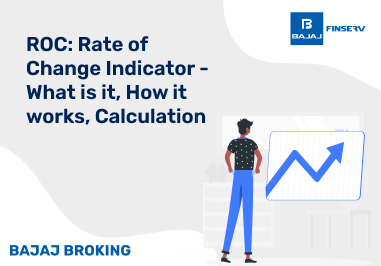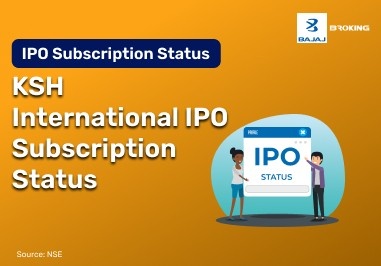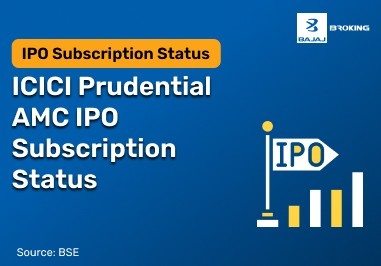What are its Features?
Mid-cap stocks have certain unique qualities when compared to big or small-cap stocks:
Market Capitalization: The market capitalization of mid-cap stocks indicates that they are valued between large-cap and small-cap companies. Their market capitalization ranges between Rs. 5,000 crore to Rs. 20,000 crore.
Growth Potential: After moving past the initial “start-up” phase, mid-cap investments may have considerable growth prospects. They could mean business or market expansion, or the introduction of new products. The potential for growth makes these options appealing to investors who are looking to increase their wealth by investing in mid-cap stocks.
Moderate risk: Mid-cap stocks usually have less risk than small-cap ones. This happens because mid-cap companies are more established and have shown that they can succeed over time, unlike smaller companies. However, they still involve more risk than large-cap stocks.
Additional Read: What is Difference Between Large Cap, Mid Cap & Small Cap?
Why Should You Invest in Mid-Cap Stocks?
Here is why mid-cap stocks can be a really good option for trading in India:
Higher profitability: Large-cap shares are stable but they tend to grow slowly because they are already well-established in the market. Shares of medium-sized companies can yield higher profits for investors, as these businesses are likely to have room for further expansion.
Diversification: Adding mid-cap mutual funds or mid-cap stocks to your portfolio is a good strategy for diversifying risk, which forms a key component of smart investing. Reducing your reliance on a few big companies will positively impact your level of undertaken risk.
Lower Risk: Mid-cap stocks have higher growth potential than big companies, but they are not as risky as small ones. They usually have a more solid foundation and history, which allows them to provide a balance between profitability and risk.
Factors to consider before investing in mid-cap stocks
There are a few important things to keep in mind before investing in mid-cap stocks:
Risk Tolerance: Mid-cap stocks carry more risk compared to those of bigger companies. These firms are in a phase of growth, and it's uncertain whether they will succeed in the future. Assess how much risk you can handle and make sure that the possibility of price swings in mid-cap stocks is acceptable for you.
Research: Do not only depend solely on the company’s market cap while making your choice. Research about the particular businesses that you are thinking of investing in. Analyze their financial health, quality of management, and future growth prospects.
Liquidity: Mid-cap stocks usually have lesser liquidity compared to bigger companies. Therefore, it can be simpler to purchase and sell stocks of large companies. This might present a problem if you need to exit your mid-cap investment quickly.
Risks Associated with Mid-Cap Stocks
While mid-cap stocks have growth potential, there are some associated risks that you should be wary of:
Price Volatility: Compared with shares issued by large companies, mid-cap stocks usually have more price swings. Their stock prices can change a lot owing to overall market sentiment or a positive/negative piece of news about that company. This volatility might not be suitable for investors seeking stability in their portfolios.
Uncertainty: While mid-cap companies possess the potential to grow, their future success is not certain. These businesses are generally at a developing stage and might encounter unexpected problems or difficulties that can affect their growth plans and also influence the price of their shares on the market.
Management: The success of a medium-sized company is often linked to the capability of its management team. Research deeply about the experience and past performance of the management to evaluate whether they can guide the business towards lasting growth.
What are Some Alternative Options to Mid-Cap Stocks?
There are a few alternatives to mid-cap stocks that might interest you as a trader in the Indian stock market:
Large Cap Stocks: Large-cap stocks come from companies that are already big, stable, and well-established in the market. They may not have much scope for growth, but they can solidify your portfolio by reducing the amount of risk it carries.
Small Cap Stocks: Those investors who can accept a greater amount of risk and plan to invest long-term, small-cap stocks might be a more suitable alternative to mid-cap investments. These stocks can grow quickly but they also involve much greater risks than mid-cap stocks.
Debt funds: These funds invest money in bonds issued by the government or various companies, providing steady income and less price fluctuations than equity shares. This can be a suitable choice for people who want to keep their initial investment safe while also receiving consistent profits.
Exchange Traded Funds (ETFs): ETFs offer a collection of stocks or assets, usually following a specific market index. They let you invest in certain sectors or the wider market without having to select single stocks. They cover mid-cap stocks as well.
Mutual Funds: Mutual funds give you the advantage of having experts manage your investments and diversify them across different types of assets like shares and bonds. Many of these are dedicated mid-cap mutual funds, giving you the chance to gain from these companies’ capacity for growth while experts choose the stocks for you.
Advantages of Mid-Cap Stocks
Growth Possibility: Middle-sized companies usually have a significant growth potential. They are often in the expansionary stage, generating greater returns compared with shares of bigger companies. Investors can benefit from significant capital appreciation as these companies grow and mature.
Market Stability: Small-cap stocks might be risky and unstable, but mid-cap stocks usually offer more steadiness. They offer a middle ground between the volatility of small-cap shares and the steadiness of large-cap shares, which makes them a safer option for investing.
Diversification: Including medium-sized company stocks in a mixed portfolio can improve earnings and decrease danger. They give access to different sectors and markets, which helps investors protect against fluctuations in the market.
Disadvantages of Mid-Cap Stocks
Conversely, there are some disadvantages of mid-cap stocks that investors should keep in mind:
Volatility: Mid-cap stocks can experience significant price fluctuations. Although they are generally more stable than small-cap stocks, mid-caps can still be quite volatile, making them riskier than large-cap stocks.
Limited Resources: Compared to large-cap companies, mid-cap funds often have fewer resources. This can limit their ability to weather economic downturns, invest in new technologies or expand operations, potentially impacting their long-term growth prospects.
Market Sensitivity: Mid-cap stocks are more sensitive to market conditions and economic changes. They may be more adversely affected by interest rate hikes, economic recessions, or industry-specific downturns, leading to potential declines in stock value.
How to Invest in Mid-Cap Stocks?
You can approach investing in mid-cap stocks in multiple ways:
Demat Account: To do stock trading in India, you must have a demat account. This allows you to store all your share certificates in digital form. Many banks and online brokers offer Demat account services.
Research: It is not sufficient to solely consider market size while making investment choices. You should study the particular businesses that catch your attention, along with their financial situation, strategies for growth, management style, and patterns in the industry.
Medium of Investment: It is possible to invest in mid-cap shares directly. You might also consider other choices such as mid-cap mutual funds, or ETFs.
Buying Stocks directly: This lets you choose specific shares to invest in, giving you more control over your investment decisions. However, this approach requires thorough research and comes with a bigger level of risk.
Mid-Cap Mutual Funds: Mid-cap mutual funds pool your money with investments from other people and invest it in a selected group of mid-cap stocks. This ensures that not only are your mid-cap funds diversified, but there are also experts to manage them.
Mid-Cap ETFs: These are funds traded on an exchange that follows a mid-cap index. They provide a way to spread your investments across this segment.
Conclusion
Mid-cap stocks might be an attractive choice for investors looking for growth. These stocks sit right in the sweet spot between established and smaller companies, providing the ideal combination of growth with minimal risk. You should focus on learning more about the key features of these stocks, following which you can start paper trading as a means to test out your mid-cap stock trading strategies without any risks involved.













